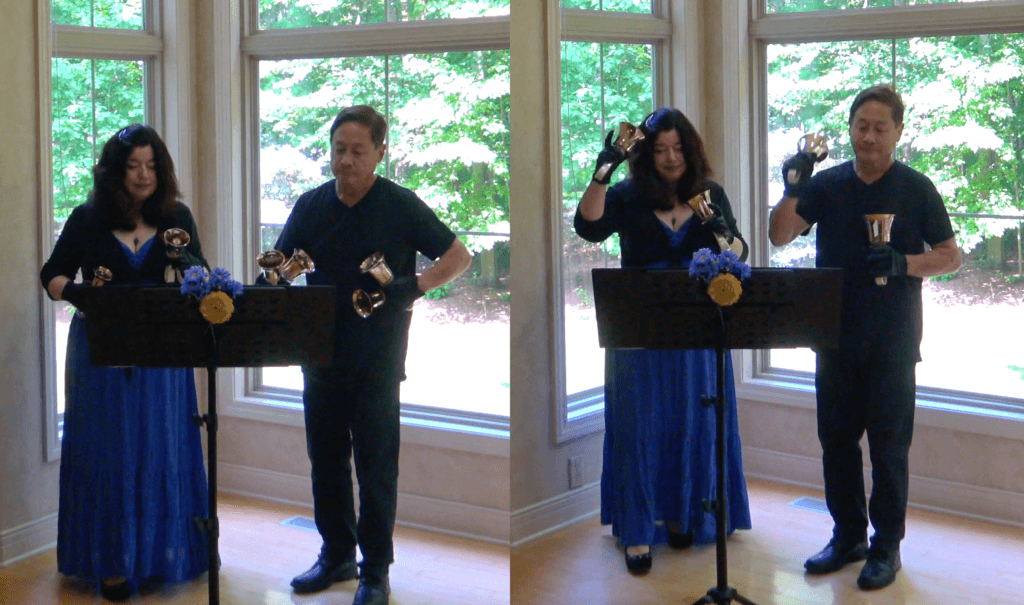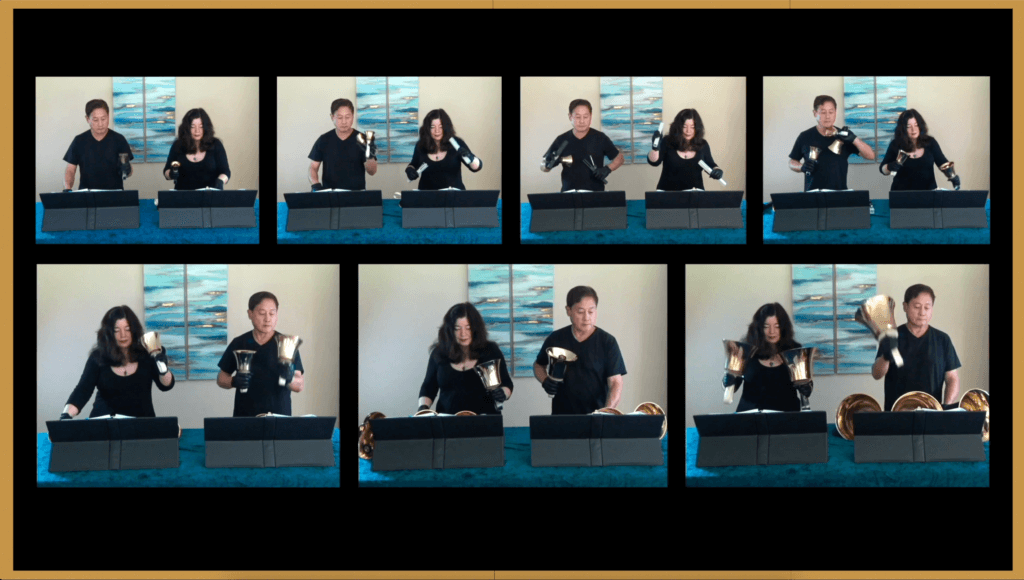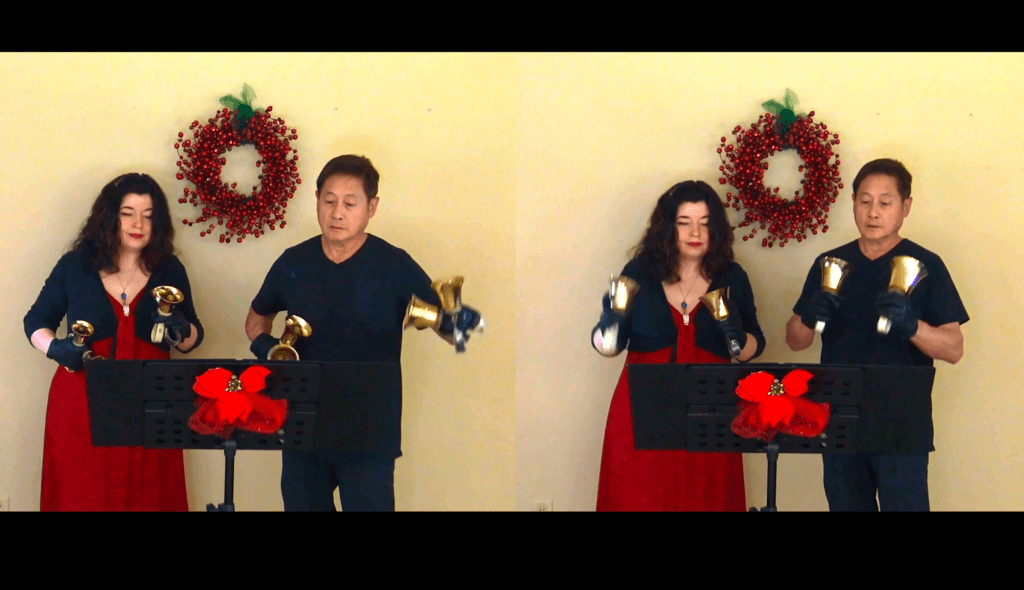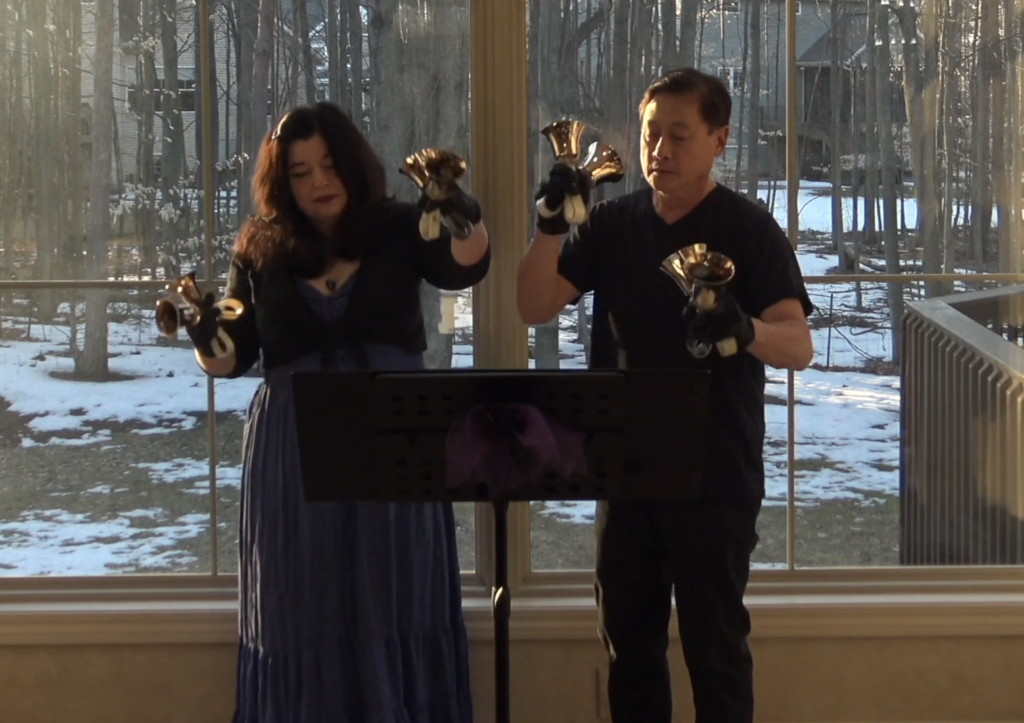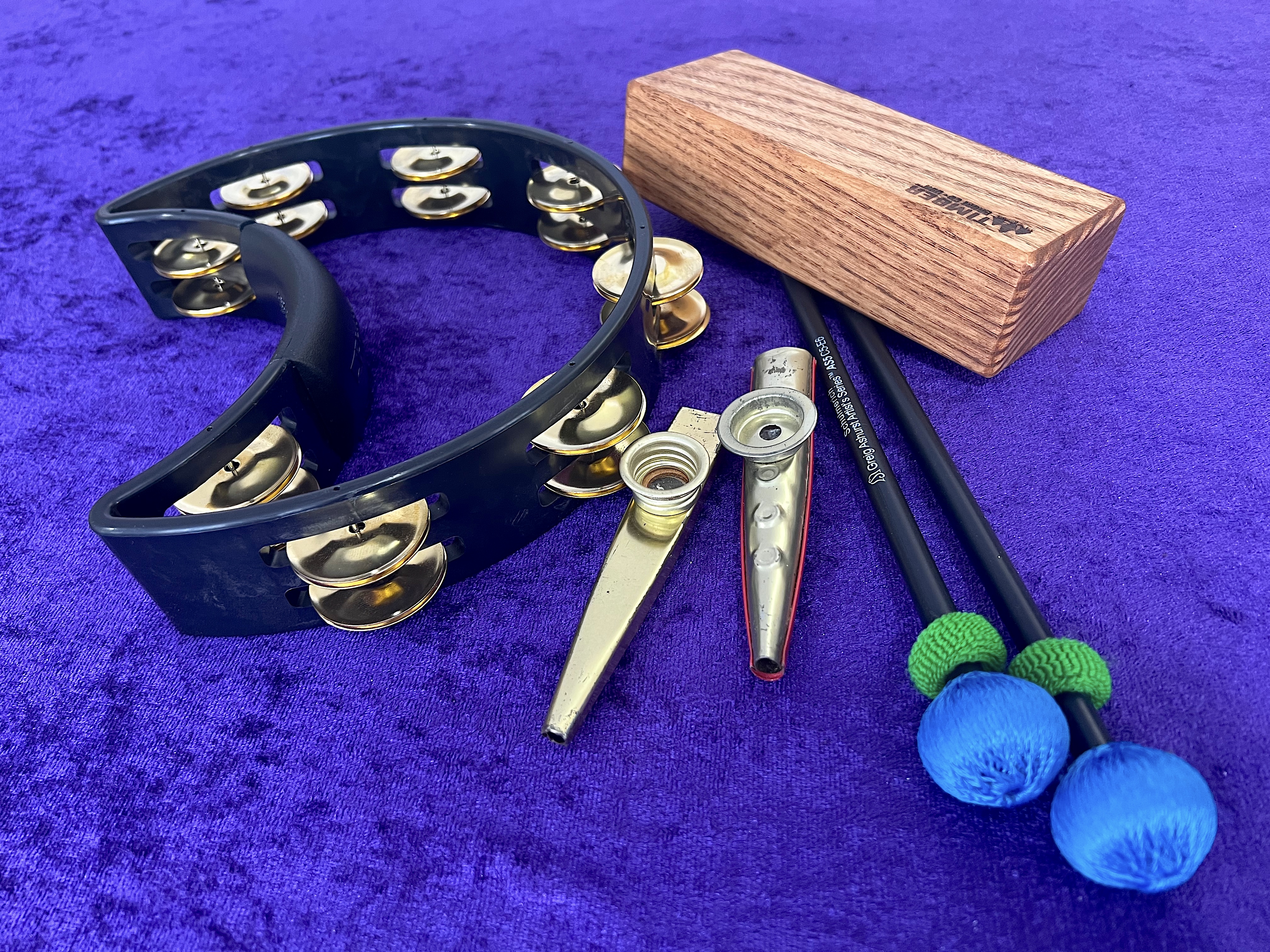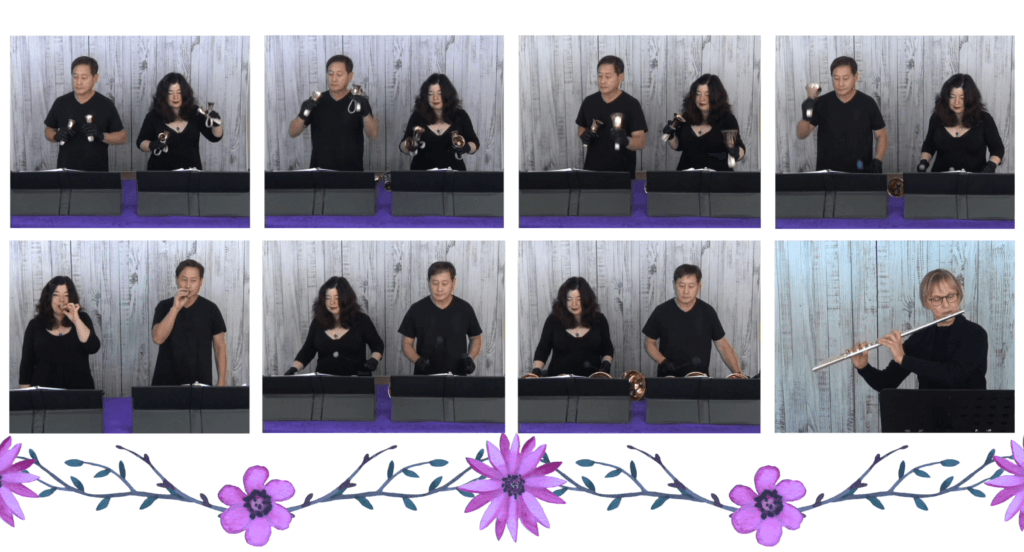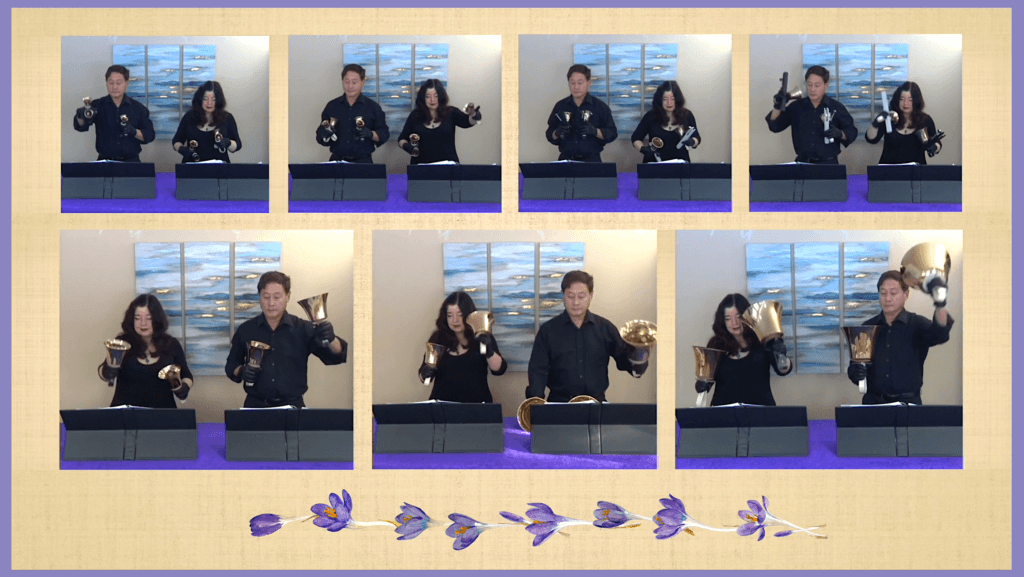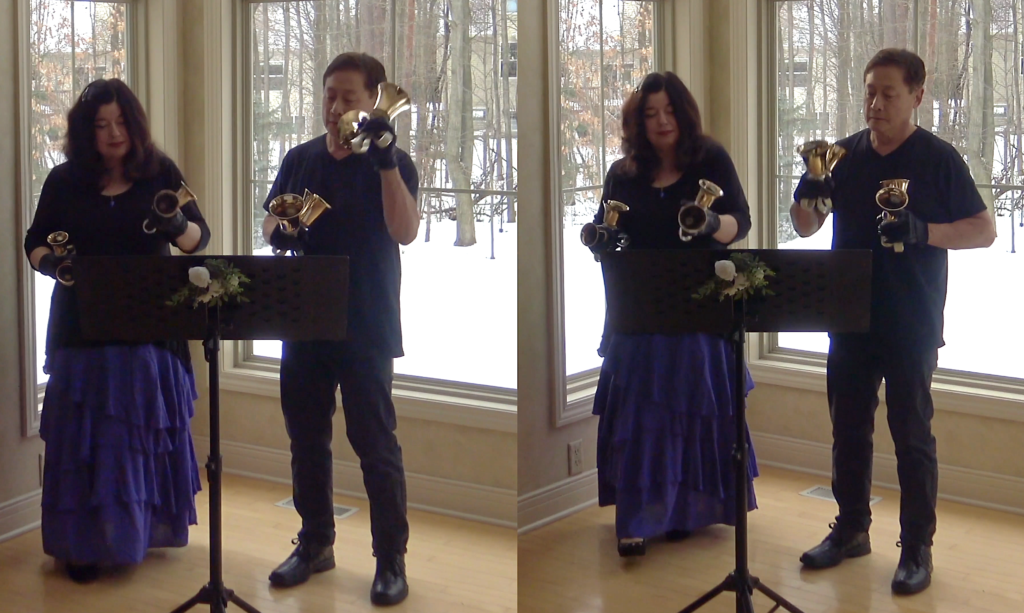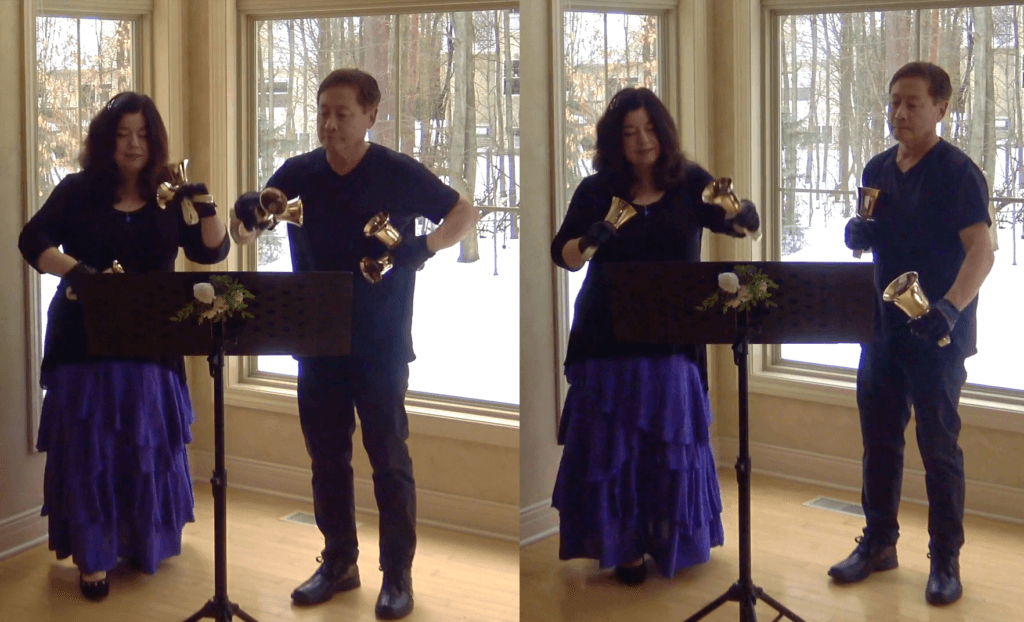Our latest 12-bell arrangement is the hymn Be Thou My Vision. SLANE is a traditional Irish folk tune first published in 1909. It’s also used as the setting for Lord of All Hopefulness.
More about Be Thou My Vision, 12-bell version
As with all Choraegus 12-bell pieces, Be Thou My Vision is suitable for 3-6 ringers. We demonstrate our 12-bell arrangements using 4-in-hand, but if you have six ringers, they’ll only need two bells each. Sheet music is available to purchase and download from Choraegus. This arrangement is available for three different ranges of handbells – one version using C5-G6, another for Bb4-F6, and another for F5-C7. Be sure to refer the bells-used charts on the Choraegus webpage to make sure you have all the bells you need, and be sure to purchase the right version.
Other arrangements of these hymn tunes available from Choraegus
You’ll find both of these hymns also available as arrangements for just eight handbells. There’s a list of all our 8-bell hymn arrangements on the Choraegus website. Please note that our 8-bell arrangements and 12-bell arrangements aren’t designed to be played together. Each piece is a completely different arrangement. There’s also a Level 3 arrangement of this tune for 3-5 octaves with organ, which was included in the Michigan AGO’s gift to their conference participants in July 201
Important things to know about Choraegus handbell music
Choraegus handbell music scores are designed to be downloaded as a PDF files. That means you’ll be responsible for printing your own music, and you won’t receive anything in the mail. Purchasing a 12-bell arrangement gives you permission to print and maintain up to six copies for your handbell group – so please don’t pay for more copies than you need! A practice track is also available separately – useful if your ringers need to practise their parts without the full group being available.
Your purchase also gives permission for performance, broadcasting, live-streaming and video-sharing online. See our licensing agreement for full details. Please remember to mention the arranger (Larry Sue) and the publisher of the piece (Choraegus) on video-sharing sites, social media and any printed materials such as concert programs. We appreciate your help in getting the word out about Choraegus handbell music – and if you make a video of your handbell choir playing any of our pieces, we’d love to see it!
If you haven’t purchased music online from Choraegus before, you might like to look at our step-by-step guide. We designed this to help you navigate the purchase and download process in a (we hope!) stress-free way.
Any questions?
If you have any questions about our music, please start by reading our Frequently-Asked Questions. Please contact us if you don’t find the answers you need, and we’ll be happy to help!
